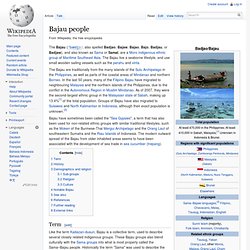

Navagio. Coordinates: Navagio (shipwreck) Bay Navagio Beach and Shipwreck of the Panagiotis at 'Smugglers Cove' Zakynthos Navagio bay, crystal clear waters.

Location & Tourism[edit] A map showing the location of Navagio. Navagio is located on the north-west shore of the Ionian island of Zakynthos (Zante), in the Municipality of Elation. BASE Jumping and Death in 2012[edit] A famous BASE jumping location, said to be one of the world's most spectacular base jumping locations, according to the Daily Telegraph that reported on a British tourist's death on 11th Jun 2012 ("British parachutist left dangling from cliff phoned girlfriend to say 'don't worry' then fell to his death", see external links). References[edit] External links[edit] Amalfi Coast. The Amalfi Coast (Italian: Costiera Amalfitana) is a stretch of coastline on the southern coast of the Sorrentine Peninsula in the Province of Salerno in Southern Italy. The Amalfi Coast is a popular tourist destination for the region and Italy as a whole, attracting thousands of tourists annually.[1] During the 10th–11th centuries, the Duchy of Amalfi existed on the territory of the Amalfi Coast, centered in the town of Amalfi.
The Amalfi coast was later controlled by the Principality of Salerno, until Amalfi was sacked by the Republic of Pisa in 1137. Since then the Amalfi coast has experienced a crisis.[2] But after the unification of Italy the Amalfi coast has enjoyed a huge economic revival, prompted even by the international tourism.[3] In 1997, the Amalfi Coast was listed as a UNESCO World Heritage Site as a cultural landscape.[4] Overview[edit] Like the rest of the region, the Amalfi Coast lies in a Mediterranean climate, featuring warm summers and mild winters. Transport[edit] Kadisha Valley. Coordinates: The Kadisha Valley (also known as Qadisha Valley, Wadi Qadisha, Ouadi Qadisha, or وادي قاديشا in Arabic) is a valley that lies within the Becharre and Zgharta Districts of the North Governorate of Lebanon.

The valley is a deep gorge carved by the Kadisha River, also known as the Nahr Abu Ali when it reaches Tripoli. Kadisha means "Holy" in Aramaic, and the valley, sometimes called the Holy Valley, has sheltered Christian monastic communities for many centuries. The integrity of the Valley is at risk due to encroachment of human settlements, illegal building and inconsistent conservation activity.[1] Although it is not yet on the UNESCO "in danger" list,[2] there have been warnings that continued violations may lead to this step.[3] Geography[edit] The long, deep Qadisha Valley is located at the foot of Mount al-Makmal in northern Lebanon. It is here also that the Holy River, Nahr Qadisha, flows, its source being in a sacred mountain celebrated in the Scriptures.[1] Map[edit] Bajau people. The Bajau (/ˈbædʒɔː/, also spelled Badjao, Bajaw, Bajao, Bajo, Badjau, or Badjaw), and also known as Sama or Samal, are a Moro indigenous ethnic group of Maritime Southeast Asia.

The Bajau live a seaborne lifestyle, and use small wooden sailing vessels such as the perahu and vinta. The Bajau are traditionally from the many islands of the Sulu Archipelago in the Philippines, as well as parts of the coastal areas of Mindanao and northern Borneo. In the last 50 years, many of the Filipino Bajau have migrated to neighbouring Malaysia and the northern islands of the Philippines, due to the conflict in the Autonomous Region in Muslim Mindanao.
As of 2007, they were the second-largest ethnic group in the Malaysian state of Sabah, making up 13.4%[1] of the total population. Groups of Bajau have also migrated to Sulawesi and North Kalimantan in Indonesia, although their exact population is unknown.[3] Term[edit] History[edit] The exact origin of the word "Bajau" is unclear. Bajau woman and children.